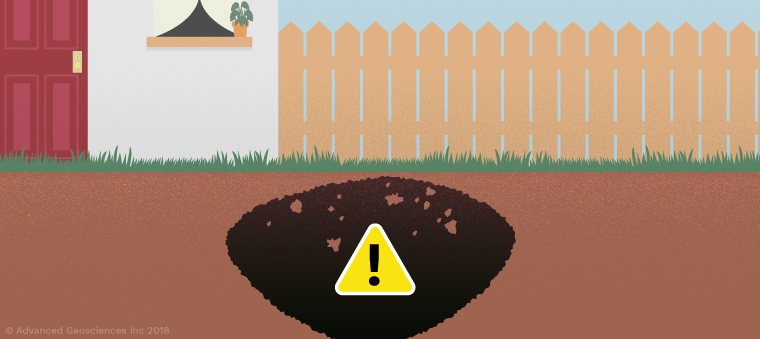
In our previous article, The 7 Most Common Signs of Sinkholes, we went over some visual cues to spot sinkholes before total collapse. Now, let’s get a little more hands-on and show you how you can actually test for sinkholes before they occur.
So let’s say you suspect that your site may have an underground void (maybe you see depressions in the ground or cracks in your foundation). If you see any signs of a sinkhole, you’ll have to test the area to see what kind of subsidence or sinkhole you’re dealing with. We recommend working with a local geoscientist to help you do a geophysical test.
Specifically, we’ll be talking about testing via an Electrical Resistivity Imaging (ERI) survey. There are a few other ways to test for sinkholes—such as Cone Penetrometer Tests or Standard Penetration Tests. You should look into what test is right for your property. However, we recommend ERI surveys because it provides high accuracy, it’s easy to set up, and doesn't involve drilling for most properties.
So if you’re looking for an underground void using ERI, first you’ll want to set up your survey lines. We recommend setting up several survey lines or performing a roll-along in order to scan as much of your property as possible. Typically, one ERI survey can take 30-45 minutes. Spending an afternoon scanning your property may sound like a lot of work but it can save you a lot of money, stress, and even serious injuries if you do find a sinkhole.

After you have scanned your target area, you’ll want to look at the data by using inversion software (such as EarthImager™ 2D or EarthImager™ 3D). What you’ll be looking for is high resistivity. High-resistivity areas could indicate an air-filled void that hasn’t yet caved in but will likely continue to subside. Similarly, you may want to look out for pockets of very low resistivity. Groundwater is highly conductive, so if you see a pocket of extremely low resistivity outside of your water table, you may be dealing with a water-filled void. Take a look at the example below based on a Case History in Colombia. You can clearly see air-filled voids in the ERI data.

If you find a void during your geophysical survey, you can dramatically cut down on the cost of drilling. ERI surveys provide precise drilling targets so that you can begin repairs and mitigate further damage.
Note: This article is a redux of a previous blog post, The 7 Most Common Signs Of Sinkholes & How To Test For Them, originally published Sept. 12, 2016.

